Home Food Preservation – 10 Ways to Preserve Food at Home
This post may contain affiliate links. Read my full disclosure here.
There’s never been a better time to learn how to safely preserve food at home. Home food preservation helps you stock up and save money, whether you’re growing your own food or buying in bulk.
It adds variety to meals, and the flavor of home preserved foods can knock the socks off of most commercial offerings. You control what’s in your food.
We compare different home food preservation methods, so you can decide which ones work best for you.
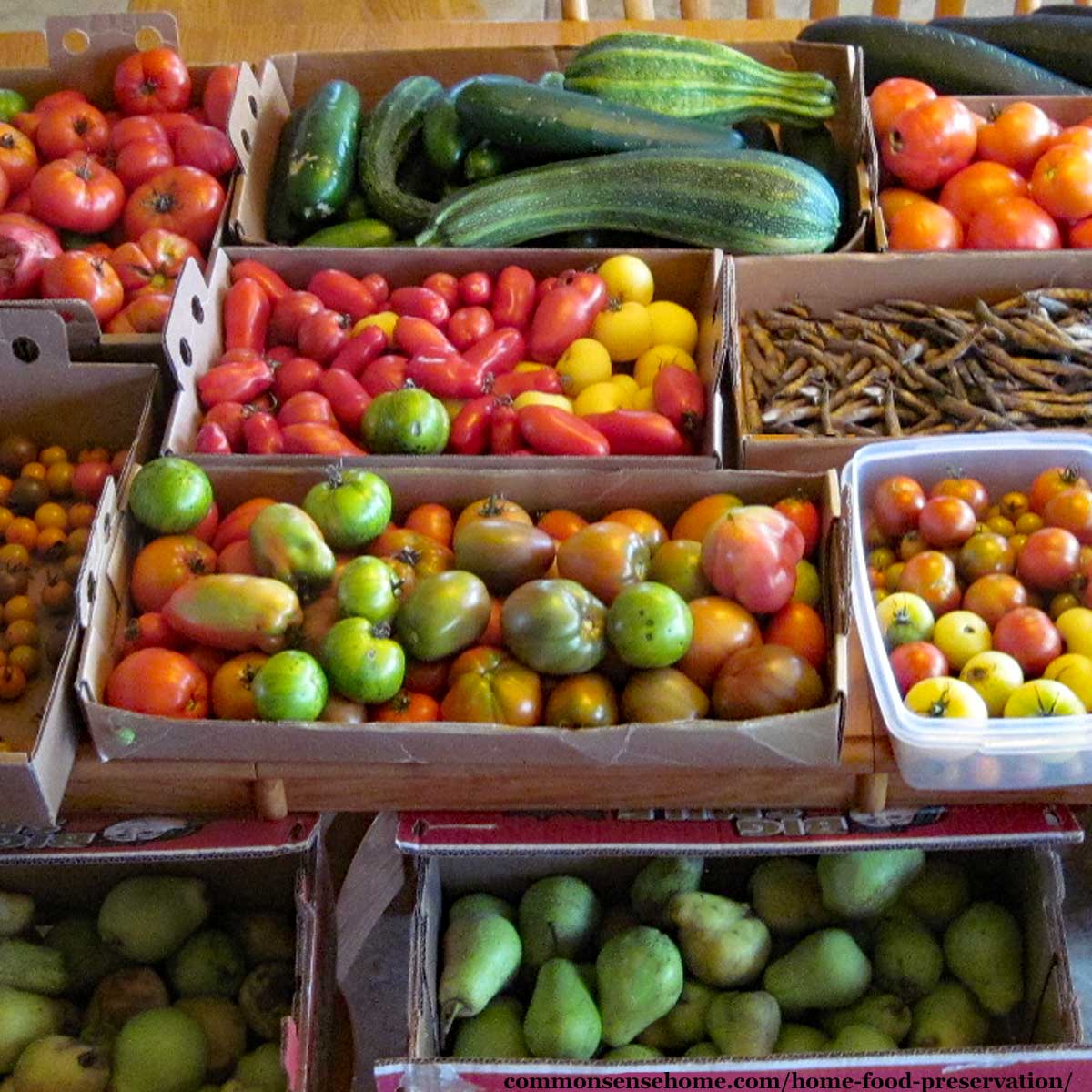
Home Food Preservation – 10 Ways to Preserve Food at Home
Some home food preservation methods are old, like cool storage, while others are new, like freeze drying. Some home food preservation techniques are no longer recommended due to safety concerns.
I use a mix of food preserving options. Each method gives a different flavor and texture. Different foods also store better one way versus another.
Storing food doesn’t need to be complicated, but we do want to follow good food safety practices to avoid foodborne illness.
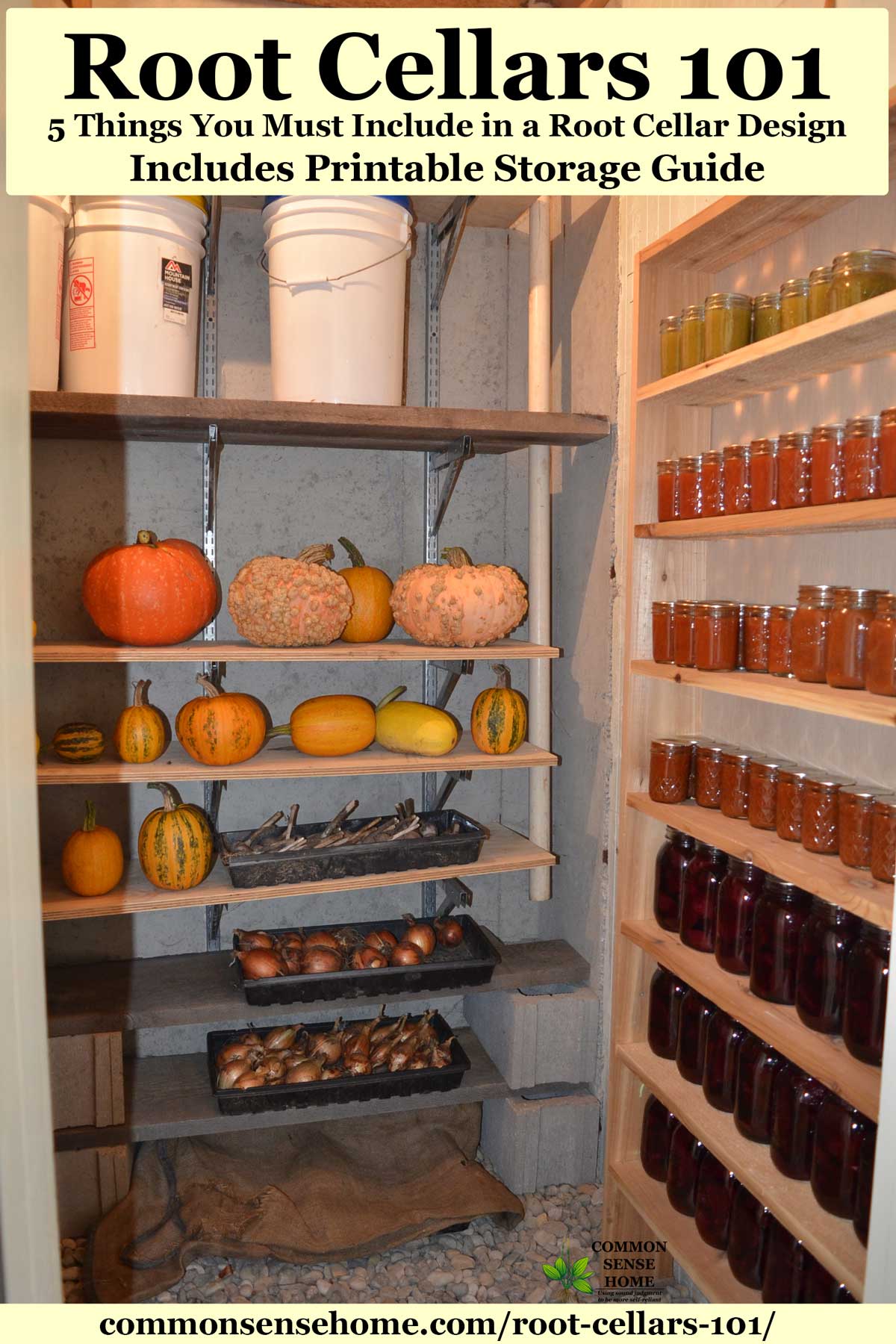
1. Minimal Processing – Root Cellars, Cool Storage and Room Temperature Storage
Cool storage and room temperature storage are the easiest home food preservation options. This includes cool, dry storage, such as an unheated pantry or porch, and root cellaring, i.e., cool, damp storage.
“Root cellars” type storage areas may include:
- root cellars
- unheated basement space
- crawl space
- in ground “clamps” (holes or trenches for food storage)
- other options
See “Root Cellars 101” and “Above Ground Root Cellars – Enjoy Your Local Produce Longer” for detailed information on storage options and specific crops.
Some good candidates for root cellar storage include:
- Potatoes
- Carrots
- Cabbage
- Beets
- Apples
- Onions
- Garlic
Crops that require minimal processing for storage include shell beans, dry corn, pumpkins and squash, and root vegetables. You can read more about my favorites in the post, “The 5 Easiest Vegetables to Store”.
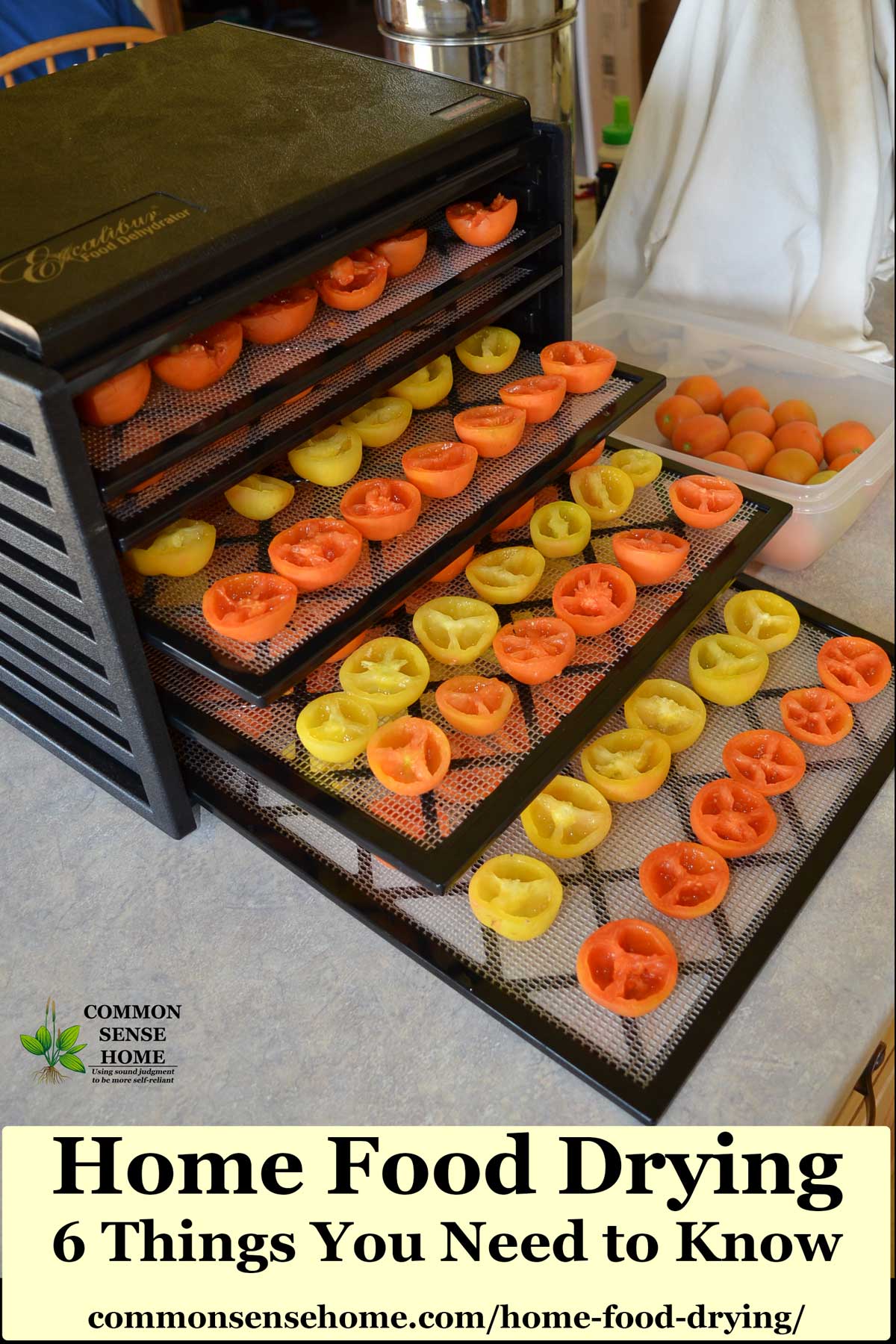
2. Drying/Dehydrating
Food drying is one of the oldest home food preservation methods. Food can be dried using:
- Commercial dehydrators, such as the Excalibur or American Harvest Dehydrator
- Solar dehydrators
- Sun Ovens
- Baking sheets in the oven
- Air drying/hang drying
Dried foods are great when storage space is tight, but not all foods dehydrate well. Store dehydrated foods in a cool, dry location in an airtight container for longest shelf life.
Foods that dehydrate well include:
- Fruits
- Vegetables
- Fruit Leathers
- Jerky
Check out “Home Food Drying – 6 Things You Need to Know to Dehydrate Food at Home” for recommended equipment, plus drying guidelines, storage tips and a printable quick reference chart for fruit dehydrating. See Vegetable Dehydrating 101 for a printable list of vegetable blanching and drying times.
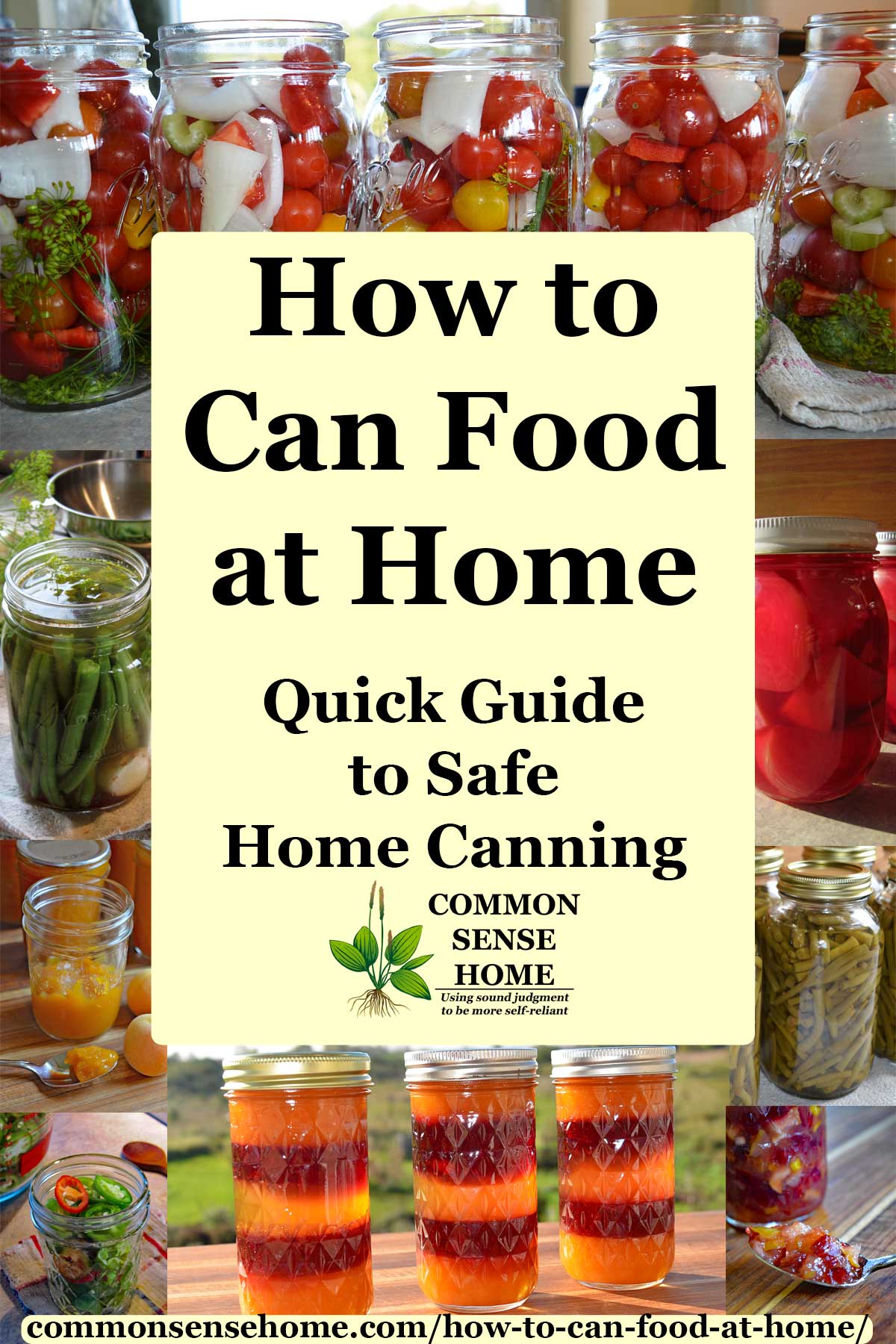
3. Canning – Water Bath Canning, Steam Canning and Pressure Canning
Home canning is the heat processing of food in glass jars for preservation. For many years, food was heat processed in commercial facilities in cans (thus the term “canning” as opposed to “jarring”).
The Mason jar was invented and patented in 1858, but didn’t see widespread use until later in the century.
Note: Those at higher elevations should adjust processing times. See “Altitude Adjustments for Canning“.
If you are having difficulty finding canning lids, I purchased generic lids from Uline in 2020. They worked well. Be wary of scammers. Ball and Kerr do not sell lids online direct to consumers.
Water Bath Canning
Water bath canning uses a large stockpot or kettle with a lid. Jars sit in a canning rack (or other material) so they are not directly in contact with the bottom of the pot, and are covered with at least two inches of water.
Water bath canning preserves high acid foods (pH of 4.6 or lower), such as:
- Fruits
- Jams, jellies and other spreads
- Tomatoes (with added acid)
- Pickles and relishes
Steam Canning
Recently re-approved for home use, steam canning uses a special canner that heat processes with steam, but not under pressure. It’s safe for use with high acid foods.
Can I use a pressure canner for water bath canning?
If you have a pressure canner, you may use it for water bath canning by leaving the vent open. If your canner has a rubber overpressure plug, remove it for venting if desired.
Please be careful using a pressure canner for water bath canning. Some people noted that they get a slight pressure build up inside their older units, leading to a release of hot steam when the lid is opened. Loosely covering the canner with the lid (instead of locking it on) helps prevent steam buildup.
Read “How to Can Food at Home – Quick Guide to Safe Home Canning” for more information on water bath, steam and pressure canning.
Pressure Canning
Pressure canning must be done in a pressure canner. Pressure canners process foods using high temperature, high pressure steam.
A pressure canner is not the same as a pressure cooker, although some pressure canners can also be used for pressure cooking. Some cooperative extension offices offer pressure canner testing.
PRESSURE CANNING MUST BE USED FOR LOW ACID FOODS, such as:
- Beans
- Carrots
- Corn
- Meats
- Soups
- Sauces
- Broth
Unsafe canning practices can lead to botulism poisoning, but it’s easily avoided with trusted canning recipes. See “Botulism – Causes, Symptoms, Treatment, Tips for Safe Home Canning“.
Always used recipes from trusted sources, such as The National Center for Home Food Preservation. Invest in a good food preservation book (or two). We always follow food safety guidelines on this site.
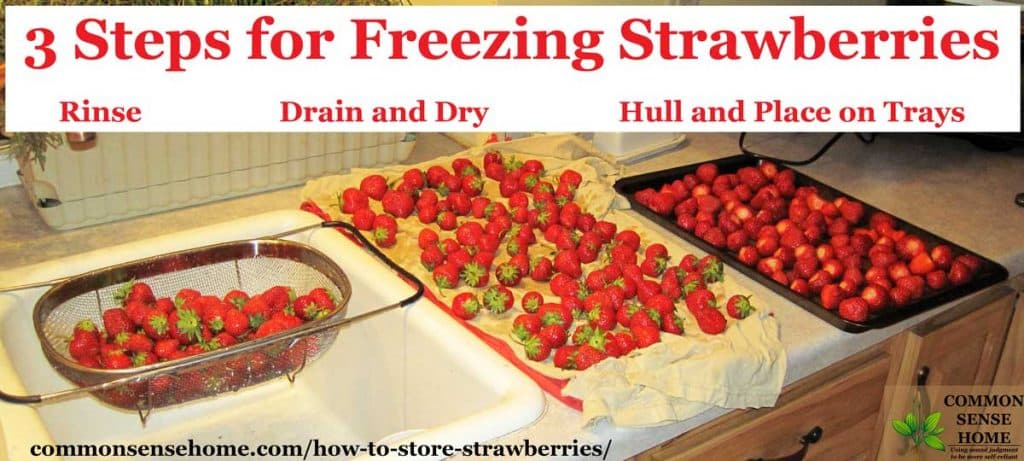
4. Freezing
Freezing foods doesn’t need much specialized equipment, so it’s easy for beginners. Before freezing, most vegetables require blanching or cooking. This stops enzyme action and ensures good quality.
What is blanching? Blanching involves heat treating the veggies, then immersing them in cold water to stop the cooking process. Three minutes in boiling water is a common blanching time.
Fruits are frozen “as is”, or with sugars or antioxidants to extend storage life and slow discoloration. With both fruit and vegetable preservation, I like to freeze foods on a cookie sheet and then pack them into vacuum sealed packages for long term storage.
Sealing frozen produce in vacuum seal bags helps prevent ice crystal formation and can extend the storage life of frozen foods 3 to 5 times longer. I rarely store anything in the freezer without vacuum sealing.
Would you like to save this?
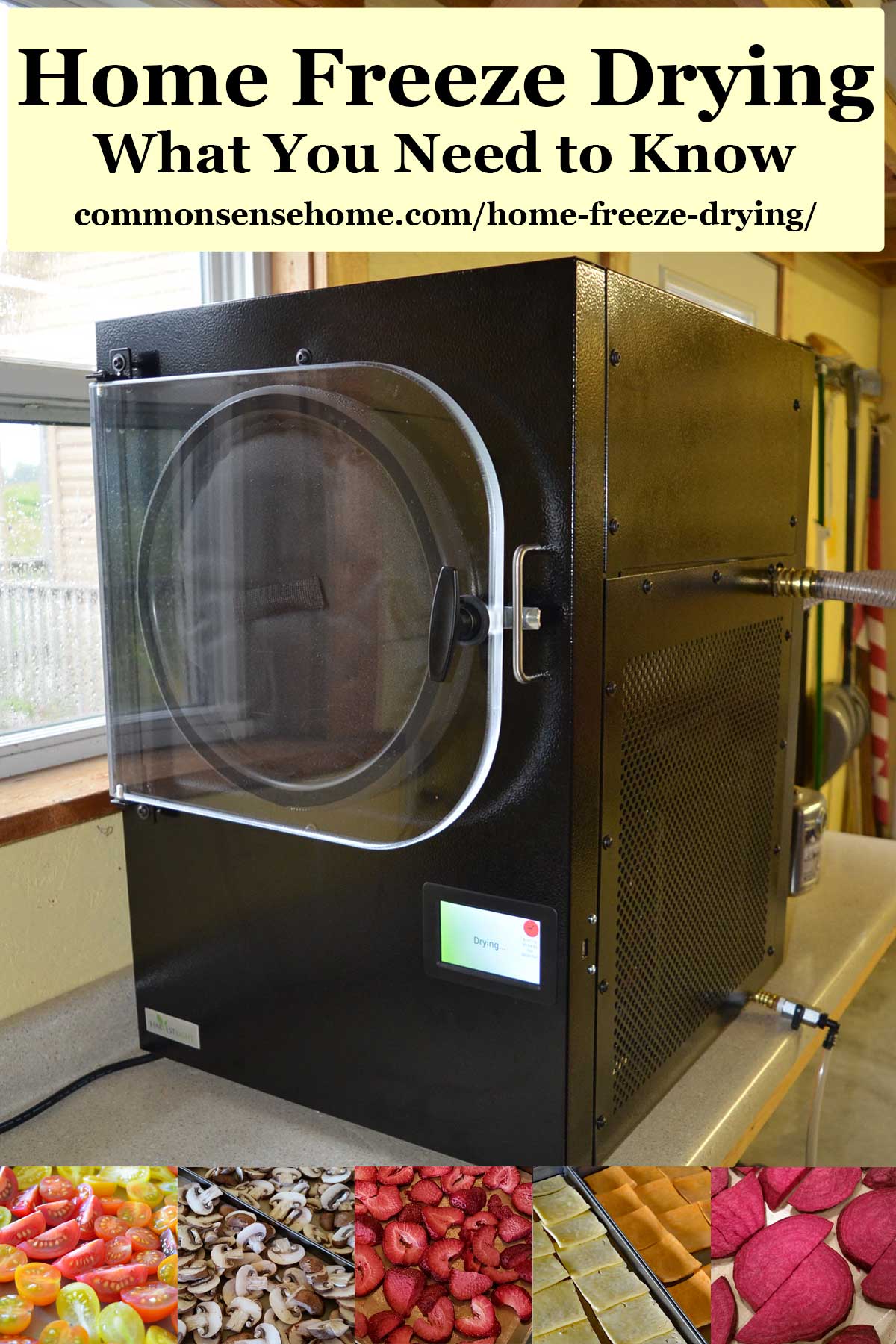
5. Freeze Drying
Freeze drying (lyophilization) is now an option for home food preservation. The company Harvest Right manufactures home freeze drying units in Utah.
Click here to order a home freeze dryer or compare prices.
How does a home freeze dryer work? From “Home Freeze Drying – The Good, The Bad and The Ugly”:
- First, you get a heavy duty freezer (the Harvest Right units drop to -30°F (-34°C) or colder).
- Second, you pair this up with a completely airtight chamber that can hold a vacuum (no oxygen) every single time you use it.
- Third, you tie in a high end vacuum pump strong enough to suck the stripes off a zebra.
- Fourth, you add a heater and thermostat, so you can cycle the temps up and down, repeating the sublimation process for hours on end.
- Fifth, tie in a humidity sensor to make sure the water is out, triggering the cycle completion.
Home freeze drying allows you to preserve many foods that do not store well using other methods, such as dairy products, full meals (hot dishes, cream based soups, etc), and leftovers.
You can also store vegetables, fruits, meats and seafood. For a detailed review and more information, see “Harvest Right Home Freeze Dryer Review”. You can also read a comparison of freeze drying and dehydrating.
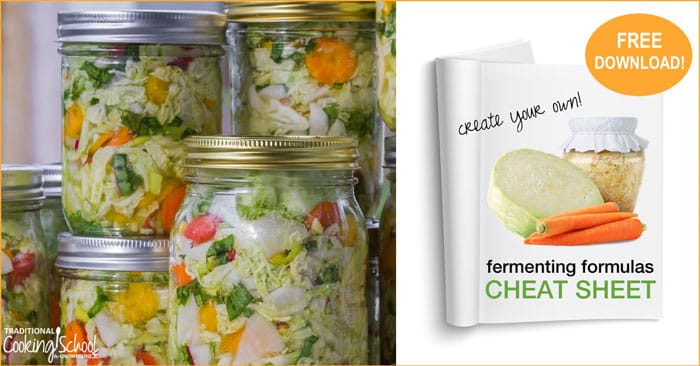
6. Fermentation
Fermentation changes low acid foods into high acid foods, giving them a longer shelf life to store “as is”, or allowing them to be canned in a water bath canner instead of a pressure canner.
Food ferments through the use of salt, whey or specific starter cultures. This makes it easier to digest and more nutritious. Fermented food is also known as “live culture food”.
Because fermentation involves acidity and microbes “pre-digesting” the food, the flavor profile and texture changes. Fermentation helps create chocolate, cheese, yogurt, and kombucha, as well as pantry staples like sauerkraut, kimchi, sourdough bread and vinegar.
For detailed instructions for live culture foods, grab this free fermenting formulas cheat sheet from The Traditional Cooking School.
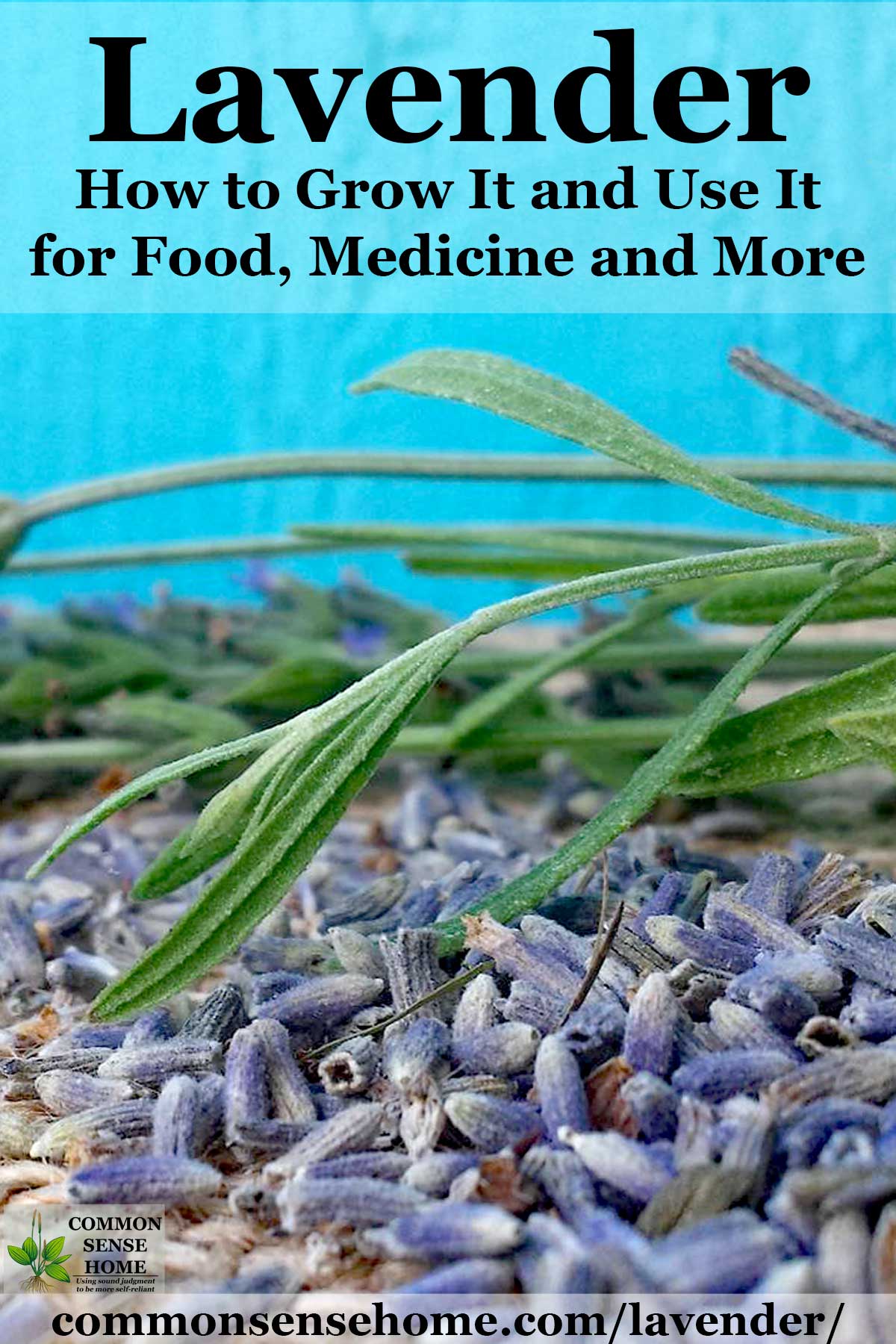
7. Preserving in Salt and Sugar
Preserving foods in salt and sugar was more common before modern canning, freezing and dehydrating were available. Salt and sugar draw liquid out of the food. This interferes with microbe growth. Bacteria and molds need water to grow, just like us.
Because they dramatically change flavor and texture, salt and sugar preserving are useful for those with adventurous palates.
Herb infused salts and sugars are a fun way to easily preserve your fresh herbs. Visit “Lavender – How to Grow It and Use It for Food, Medicine and More” to learn how to make a basic herbal sugar.

8. Immersion in alcohol
Like salt and sugar, alcohol draws water out of food, inhibiting microbe growth. You can submerge small amounts of food completely in the hard liquor of your choice, and they will store almost indefinitely. Don’t try to preserve too much food in too little alcohol. There’s a limit to how much water can be absorbed.
This food preservation method is best for making flavor extracts and preserving high acid foods such as fruit.
See:
- Liquid Sweetener from Homegrown Stevia
- Homemade Extracts – Vanilla, Lemon and Almond
- How to Make Chocolate Mint Extract
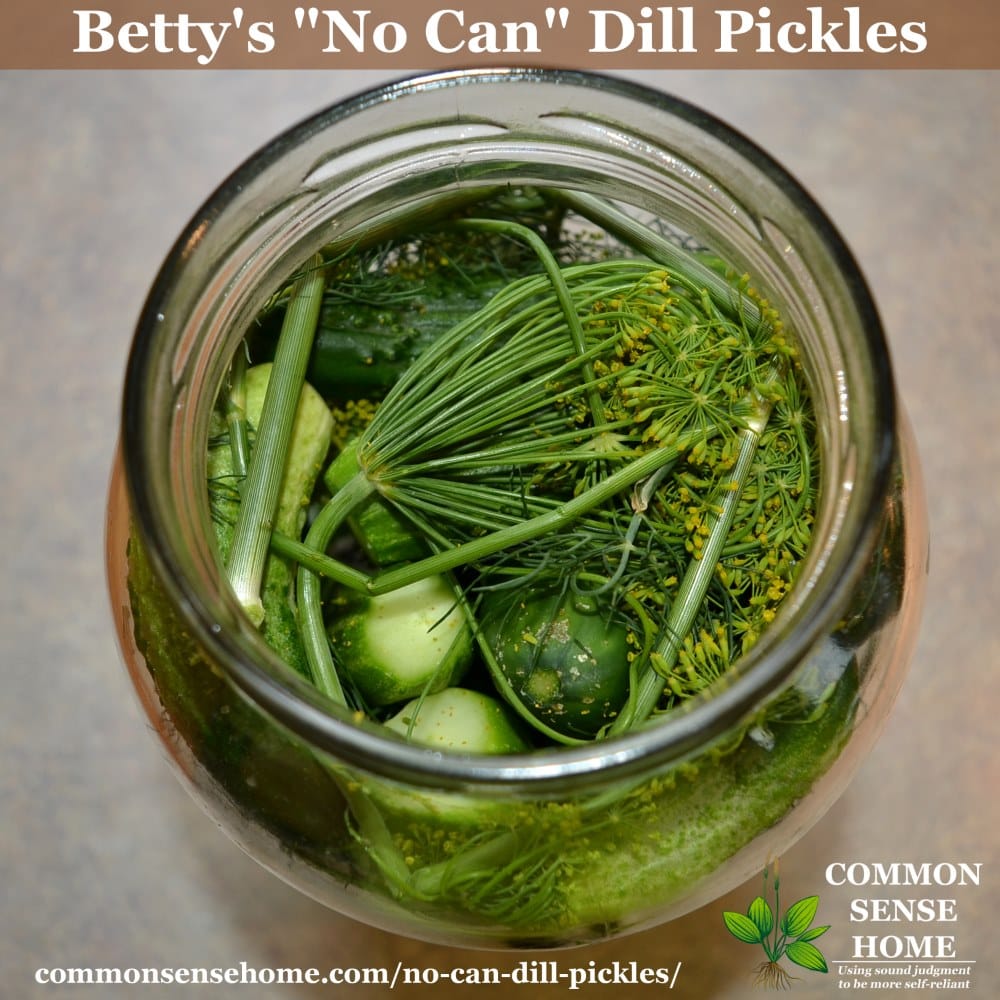
9. Vinegar Pickling
Microbes can’t survive in a high acid environment, so vinegar can be used for food preservation without heating/canning. Think old-fashioned pickle barrel. I make at least one batch of vinegar pickles every season.
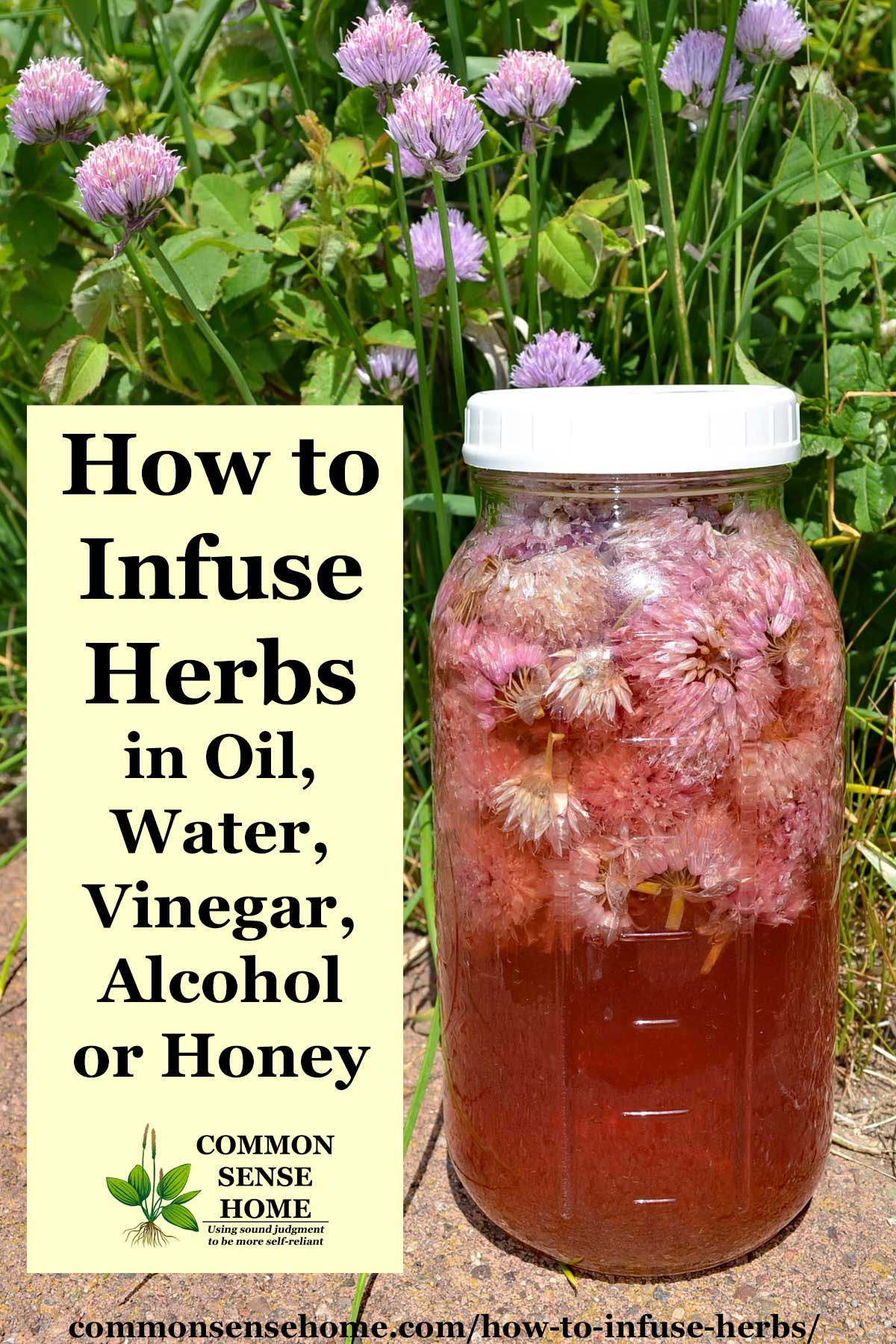
10. Immersion in Olive Oil
This home food preservation method is very common is some parts of Europe, but it is not one I recommend for the inexperienced home food preserver. Food is immersed in oil, locking out the air, to preserve it.
Low acid vegetables present a serious botulism risk.
For safe instructions on how to make herb infused oils, see “How to Infuse Herbs in Oil, Water, Vinegar, Alcohol or Honey”.
Which Food Preservation Method is the Best?
It really depends on what you’re trying to store and your storage conditions.
The Case for Canning
The Natural Canning Resource Book states:
“While some nutrients are lost during canning, recent research has shown that refrigerating fresh fruits and vegetables also results in nutrient losses, especially of fragile vitamins like vitamin C. For example, broccoli loses 50 percent of its vitamin C and Vitamin A (in the form of beta carotene) after five days of refrigeration, similar in scale to the loss of vitamin C during cooking and canning. This is because plant foods are alive and thus continue to metabolize nutrients during storage.
It’s safe to assume that root cellar storage causes the same magnitude of nutrient loss. Frozen food loses more nutrients than canned food after six months of storage. Dried food loses the most nutrients.
With this in mind, canning is preferably done very soon after harvest, when nutrients are at their peak, thus preserving the most nutrients possible. “
The Case for Dehydrating
In contrast, Mary Bell’s Complete Dehydrator Cookbook states:
When you dry foods at home under gentle conditions, you produce a high quality product. Compared with canning and freezing, both of which involve extreme temperatures, food drying is the least damaging form of food preservation.
The Case for Freeze Drying
The article “Freeze-drying fruit is top technique for retaining nutrients: Study” on Foodnavigator.com notes:
“Research conducted by Sheffield Hallam University found that freeze-drying strawberries resulted in zero loss of vitamin C and phenolic content an minimal losses in total antioxidant capacity (TAC) – only 8%. In contrast, fresh strawberries chilled for equal time showed a vitamin C loss of 18%, a TAC loss of 23% and a massive 82% loss in phenolic content.”
Fermentation adds nutrition, but fermented foods have shorter shelf lives.
Dried foods can last for years and take up very small amounts of space. Use dehydrated foods in soups, stews or other recipes where they will benefit from long, slow cooking with plenty of liquid, or as snack foods. Best used within 2-3 years.
Freezing is easy for beginners, but requires freezer space. If you vacuum seal, food can last 2-3 years. Without vacuum sealing, use food within a couple of months.
Freeze dried foods are stored at room temperature – not in the freezer – and they can last for 20 years or more. Foods with some fat or oils are best within 5-10 years.
Canning works for a wide variety of foods, but does require specific equipment. Canned goods are best used within 1-2 years.
No matter which home food preservation method you choose, properly ripened produce picked and processed quickly is likely nutritionally superior to most grocery store offerings.

Recommended Food Storage Resources
The Common Sense Recipes and Kitchen Tips page features dozens of home food preservation recipes and guides, all sorted by category, to help you tackle stocking up like a pro. Some of my other favorite preserving guides include:
- Ball Complete Book of Home Preserving
- Preserving Food Without Canning or Freezing
- Stocking Up III
- Common Sense Home Amazon “Food Preservation Stuff”
- Browse all of our Food Storage Articles
Please leave a comment below if you have any home food preservation questions. We’re here to help.
Originally posted in 2012, last updated in 2022.

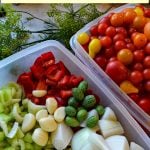
Thank you for sharing, I would like to know more about how to make a homefood preservation.
This is very educative and interesting, unfortunately, we in the sub Saharan region and Africa in general produce lots of agricultural products and have lots of waste due to spoilage and absence of preservation methods and machines. I wish many of this modern preservation techniques will be brought closer to us or seminars, workshops organized to facilitate our efficiency.
Maybe with the conditions the way they are, a mix of old and new would be best? Solar food dryers can be built affordably, and help preserve a wide variety of foods.
Perhaps some zeer style cool storage would also help.
I’ve been meaning to learn more food preservation methods. I successfully lactofermented some carrots, but didn’t flavor them with anything, so they were kind of …meh…But I am going to try my hand at water kefir soon. 🙂
Warning – once the neighbors find out you preserve food, you may end up with small mountains of excess produce from time to time. 😉
My overall strategy… summer veggies get frozen. I have canned and canned, but I just don’t like canned veggies, they’re soggy. Tomatoes and corn are exceptions, but we don’t grow corn, just eat it in season. So most of my veggie canning is tomato sauce, which I do with minimal seasoning so I can doctor it as either spaghetti or pizza sauce when I use it. If I had a surplus of corn, I’d be likely to freeze corn on the cob, just out of laziness. 😉
I also can jams and jellies, but we don’t eat much of those. And bread and butter pickles, which I love (vinegar-based more often than lactofermented).
Most of my canning is meals – when I make baked beans, or chili, or such, I tend to double or triple the recipe and can the excess. For me, canning is how I make “instant” food for later. When hubby was an over-the-road trucker, I did a lot more of this as it gave him real food on the road. Now, I’m more likely to freeze extra meals as freezing is less work than canning.
I dry a LOT, as I make a lot of soups and stews in winter. So dehydration is handy, and saves a lot of space. Whenever I am getting behind on the harvest, I break out my dehydrator.
Onions, potatoes and winter squash get “root cellared,” so to speak. I like “neck pumpkins” which make about 6 pies each, so when I cut one open, I have to freeze the rest.
Sounds like a good plan. I mix and match, too, and am not much of a fan of canned veggies, except for green beans, which the boys and husband prefer canned. 🙂
Laurie, I appreciate you compiling all these food storage resources in one place. So helpful for beginners like me. Thank you! Sharing this post. 🙂
Thank you for all of the above information. For my part, I don’t think Brad’s responses were at all rude, unless one takes the posture in advance that they are being attacked – then I could see someone construing them as rudeness. I do still have questions, and would like to see more responses from him. Don’t think that will happen if so many think his answers are inherently rude. Just my lowly opinion. Let the guy speak and don’t read so much into it.
I assembled a more detailed comparison of Jarden and Tattler lids, unfortunately without any additional help from Tattler.
I have a large pot with a lid that I could use for a water bath system of canning. It didn’t come with a rack. Any suggestions what can be used to prevent the jars from sitting on the bottom of the pot?
Thanks
Our local hardware store (Martin Hardware) sells racks separately, so you may want to check for this option, or you can find a variety of them online, such as this one – http://www.amazon.com/gp/product/B007QT4GO4?ie=UTF8&camp=1789&creativeASIN=B007QT4GO4&linkCode=xm2&tag=commosensehom-20, which is sized for large or small jars. You can also make a rack by tying together seven regular sized canning rings – 6 on the outside and one in the middle.
I like to use dry erase pens on the lids of my kefir and things that will quickly be consumed.
I have just learned how to can in the last few years, but sometimes I have a hard time knowing how to use it up. 🙂
SBCanning is an invite only site!!!! I went to her site and can not get on 🙁
That’s new – not sure when that happened. She has disappeared off Facebook, too (not been active). Not sure what’s going on. There is a lot of information on her Facebook page – https://www.facebook.com/pages/SB-Canning/130750240327122?ref=ts&fref=ts
Here’s a link to weck jars, which use rubber ring and glass lid from Canning 101:
http://www.foodinjars.com/2011/03/canning-101-how-to-can-using-weck-jars-giveaway/
Thanks, Angela
Hi Laurie,
Thank you for this info. Are you using the regular lids now? Do you know how to avoid getting the BPA in the food?
Yes, I am using regular lids now. I talked with SB Canning recently, and Ball is supposed to be producing a BPA free lid soon. For now, for me, it’s a toss up between a potential edocrine disruptor or a potential immune system disruptor. Amounts of either in a properly home canned food item will likely be less than a commercially canned item packed in metal. With either lid choice, the food should not end up in direct contact with the food for extended periods of time. Using up food items each season (as opposed to letting them sit on the shelf for many years) will also reduce risks of exposure.
All I can say is WOW! That’s a lot of information. I’m very glad to see Brad leave comments in an effort save the reputation of his company, but unfortunately I will never use Tattler lids. The very fact that there are copolymers is reason enough. I will not even use the regular ball or mason lids brand new since they contain plastics.
Even the smallest amount of plastic chemicals can bring havoc to the hormonal system of humans and other beings. For that reason alone, Tattler lids are not a good option for home canning. EVEN IF! the seal worked 100% of the time.
Human error can be the problem, but it seems that Tattler lids are more to blame. Not only that, but a lot of time and energy is put into canning, as well as produce that will spoil if lids don’t seal properly. If the lids do fail and it is the Tattler lid that is to blame, will the company also compensate customers for lost product, time and energy?
In the final analysis, everyone is entitled to their own opinion, and if Tattler wants to really be on board with the canners of today, they’d allow comments on their “blog,” but from what I can see, this blog as well as others that tell the truth about Tattler lids open their blogs up to discussion. How come Tattler doesn’t?
The alternative to ball and kerr lids would be weck jars. Even though they are more expensive canning jars, I’ll take the higher priced jars and glass lids over the high cost of health care due to plastic poisoning. But hey, that’s just my opinion. 😉
Hi Laurie! Thanks for the great information.
I’m very interested in your discussion with Brad from Tattler and I have to say that I’ve changed my mind about buying from them. Enough questions about their safety have been raised that I was questioning whether I should or not, but his responses here have been pretty rude. I wonder what happened to the old ethic of “the customer is always right” – which does not imply that the company has to bow down to the customer at all costs, but simply that the customer should be treated with respect at all times. Sadly, it seems to be going the way of the dodo. It seems like this would have been a really great opportunity for the company to make some new customers and change some minds, what with you having a well-read blog and more than 9000 followers on Facebook.
Anyway, the other thing I was going to say is that, I’m no expert, but the amount of BPA in the Kerr and Ball lids surely is a lot less than the amounts in commercially canned foods, so I hope no one stops canning based on that fear. If we have to choose between two evils…. I’ll be sticking with Ball and Kerr.
Thanks for the post! Chrissy
Thank you, Laurie. I’ve also been doing some reading and I am now removing all plastic from my kitchen. I, too, have concerns about the plastics that are currently considered safe, knowing that BPA was once considered safe. I’m sure a few weeks or months from now, they’ll come out with info showing other forms of plastic have problems as well. I’m tired of being part of a great science experiment and I certainly don’t want that for my kids.
I can’t really speak much to the science aspect of this discussion myself (My background is marketing, and I flunked Chemistry twice), but as a consumer who has used the reusable lids, I have two thoughts:
I’ve canned several times using both Tattler and regular lids in the same batches. While I will agree this could possibly be user error, I did have a significantly higher rate of failure with the Tattler lids. In fact, each of the three batches that I canned had at least one seal failure, and one of them was discovered months later after the jar was already on the shelf. I normally have maybe one seal failure a year, and I am not an amateur canner.
Also – I am concerned with plastics in general. The truth is, we know so little in general about the long-term effects of many of these things we use. Remember when margarine was considered healthy? I mean geez, even smoking cigarettes used to be considered a healthy thing.
BPA-Free is the big thing right now, but I bet you dollars to donuts that at some point we’ll make another discovery about yet another compound in common plastics that is dangerous, and another one, another one, and so forth. Maybe it’s the formaldehyde in this type of plastic, maybe it’s not… but I don’t know if I really believe that any plastic is safe anymore. I think it’s more likely that we just don’t know about it yet.
So, while I think the Tattler lids are really great… I mean, I love being able to reuse them and I think they look a lot nicer too… I find myself reaching for my stockpile of metal lids when I do canning, mainly because I don’t want to deal with seal failures. I might be exposing my family to BPA in the process, I realize that — but I guess I’ve moved more into a mentality of wanting to minimize plastics and coatings in general, because my gut tells me that BPA isn’t the only harmful plastic out there.
And once again, as a consumer I would LOVE if someone came on the market with a reusable lid that was made of a strong glass (like pyrex?) with a rubber seal. If it can be done with plastic, can it be done with glass? I know SO many people who are converting away from using any plastic at all, and so as someone with a marketing background I can tell you there would definitely be a market. I think we’re all starting to see the glass tupperware-type storage containers on the shelves these days, which is an excellent indicator of a shift in consumer wants.
Thanks for your input, Bethany. As for the convenience aspect, I always write on my metal lids with a sharpie marker, so I miss being able to do that as well. It really irks me when I spend all the time processing, and then need to reprocess to get a seal or eat the failed food. There have been so many advances in materials science, it seems like we should be able to come up with an affordable alternative. I suppose there’s not much incentive since it would take away the Big Ag corps.
Just a small thing, but I wanted to mention that I write on my jars with a Sharpie and that works very well. It washes off easily with a sponge. I do a lot of fermenting and so need to write the date and what went in things (especially water kefir) or I can’t remember when it will be ready. (Or what it should taste like!)
Thanks, Sarah. I usually use masking tape and a sharpie on jars where I can’t write on the lids. 🙂
It is very unfortunate to run across blogs like this which lead readers to believe there is a factual basis to the subject. With regards to Tattler Reusable Canning Lids, the premise of the story is based on flawed assumptions made by Lisa Rayner in her book. I have read her “findings” and have found them to be severely flawed and misleading, and we have attempted to contact her regarding her data. On the other hand, she never contacted anyone at our company regarding our product, and has no knowledge of the exact product we use, yet has a great amount of speculation and assumptions.
Furthermore, I have personally communicated with the Director of the National Center for Home Food Preservation, and know of no such data or information to corroborate your claim “The National Center for Home Food Preservation has also documented higher levels of seal failure rates on Tattler lids than Jarden two piece lids.” Could you please identify the documented source of this information for your readers?
Brad – so good of you to stop by! I’ve clarified within the post that the information on higher failure rates came from the Natural Canning Resource Book. This was noted in the comments section, along with a link to an article on the NCHFP site mentioning that they do not recommend canning with rubber rings.
While Lisa Rayner isn’t overly helpful about answering inquiries, I found the science she used in the Natural Canning Resource Book to be logical. You have stated that “her findings were severely flawed and misleading”. Perhaps you could clarify exactly what was wrong? I visited your FAQ page, and I did not find it to address my concerns.
For instance, you state that the lids are made with “FDA and USDA food grade plastic approved for direct contact use in food applications”. Could you clarify exactly what this plastic is? Is it, as Lisa states “polyoxymethlylen copolymer, an acetal copolymer”? I’m not a chemist by trade, but I have taken a number of chemistry courses while studying for my Bachelors and Maasters degrees. In any chemical reaction, it is extremely likely that there will be some uncombined reactants. It’s virtually impossible to balance reactions completely. If there are uncombined reactants, then they will likely outgas or otherwise react with other substances during the course of the lifetime of the lid, no? The amounts should be minimal, but they are present.
As for the material being FDA and USDA approved, they approve of the use of non-stick coatings, too, and that’s not working out real well for some people.
I’ve used food grade plastic in a couple different applications. My former employer tried to use food grade flexible plastic tubing to transport propylene glycol mix antifreeze (also food grade) between solar collector and solar storage. We found over time that with the extremes in temperatures seen by the solar systems (not entirely dissimilar from the temperatures seen in canning) led to the degradation of the plastic. It became brittle and the compression fittings failed.
In my home, I regularly reuse food grade plastic buckets. Over time, they all become brittle. Every plastic thing I’ve ever owned has eventually become brittle. It’s plastic. I used your lids, I had higher failure rates, and my kid damaged the first one he tried to open. Maybe we didn’t “care for them properly”, but I am an experienced canner and did my best to follow your instructions. I also give out a fair number of jars as gifts, and don’t care to bother my friends and neighbors with having them return lids as well as jars. That’s my choice. Others may choose differently.
With respect, doing anything with only 14 jars is pretty skimpy “research”. I appreciate that you have a large array of anecdotal evidence and many, many people who love your products – some of my friends included. If you want to share large scale, long term research, preferably conducted by an unbiased third party, I would love to see your test results. Instead of just stopping in and lobbing insults, give me some hard science and make me a believer. I want my readers to have the best possible information I can give them.
PS – I have a close friend who is a chemist, and I’m sure she could help me out with anything you think might be over my head.
Thank you for the opportunity to clarify. While I am not interested in a tit for tat conversation, it is important to be clear about the product. It is absolutley true acetal copolymer contains formaledyde in trace amounts. The fact that “trace amounts” are present should not be overlooked. They are very minimal, but they must be considered and any potential negative effects should be mitigated. For example, the product should not be heated above 460 degrees fahrenheit or formaldehyde may be released. Everyone with any canning experience knows the safe temperature threshold for home food canning is no greater than 250 degrees in a pressure canning environment. The melt point of the plastic alone in nearly 350 degrees, so the lids themselves would be completely destroyed at temperatures nearly 110 degrees below the molecular breakdown temperature.
Yes, the NCHFP information does state they do not recommend the use of rubber gaskets. What they are, and have been commenting on for decades, are the glass top, bail style jars and/or the zinc lids. They also specifically state the following in at least on of their pieces of instructional literature
“When using the standard two-piece metal canning lid system, do not tighten ring bands on the lids. Also, do not push down on the center of the flat metal lid until the jar is completely cooled. For other lid systems, follow the manufacturer’s directions.”
http://nchfp.uga.edu/publications/uga/uga_processing_j_j.pdf
And again, you are correct about the natural degradation of plastic, however the extremes being referenced here, and in Lisa’s book are not reasonable comparisons. A plastic bucket, of a completley different compound, left outside in the elements 24/7 is going to be exposed to much different conditions than a plastic lid that will generally spend no more than a few hours a year in an environment well below its specific capabilities, then it will be placed in a room temperature environment out of any extreme elemental exposure for the remainder of its lifetime. The two are not the same. Nor is it reasonable to extrapolate that since tap water in a plastic pipe for 20 years causes plastic to become brittle, it is therefore comparable to the few hours a year a plastic lid may be submerged in a water bath.
The very simple point I would like to make is, we are very happy to openly discuss our product with anyone. However, Lisa Rayner never attempted to contact anyone at our company, yet she comments at length regarding our product and makes a number of very wrong conclusions in a book she has published and is offering for sale.
In the very blog the following comment was made without any substantiaing evidence,
“Further, what happens to the workers who are exposed to the chemicals during the manufacture of these lids? Is it alright to expose them to formaldehyde, as long as it doesn’t get into your food?”
How is that being responsible when there is no information whatsoever related to the work envir0nment and potential hazards present?
Please understand, as I said earlier, I am not interested in tit for tat. I am simply interested in fairness in reporting, which seems not be the case.
Brad – thank you for clarifying these points. If it’s a discussion, back and forth conversation is a good thing, no?
In reference to the formaldehyde exposure:
At the time this post was written, I had also recently read the book “No More Dirty Looks” – https://commonsensehome.com/common-sense-home-book-review-no-more-dirty-looks/
and “Slow Death by Rubber Duck”- https://commonsensehome.com/book-review-slow-death-by-rubber-duck/
Both books discuss the hazards of many commonly used commercial products, including formaldehyde, so the topic was on my mind. Even if exposure levels to the consumer are low, those who work in the plants where these products are manufactured have much higher exposure rates, with accompanying health risks. For instance, here’s a formaldehyde toxicity study – http://oehha.ca.gov/air/chronic_rels/pdf/50000.pdf
Among the occupations listed in the study were “chemical workers”. It doesn’t say specifically say that the people in the study were in any way responsible for your lids, only that they worked in the chemical industry and were exposed to formaldehyde.
Something I struggle with is which option is “less bad”? The metal lids have their own set of issues, too, and can’t be reused, but for me, their failure rates have been lower, and the chemicals associated with their manufacture thus far seem “less bad”. Perhaps you have access to data that I don’t that you could share?
May I ask why you haven’t done any formal long term studies of your lids, even on your own? If you had additional data, it would be helpful. I did find it really strange that you had been in business so long and didn’t have formal data. This is a personal bias on my part, but a former employer of mine sold products that were not tested properly, and did not perform as expected, so when I see a situation that looks similar, it sets off alarm bells in my head. I’ve looked all over your website, and can’t seem to find any detailed information on exactly how long you’ve been in business, why you went out of business, volume of product sold, number of replacement gaskets sold in relation to total number of lids sold – hard numbers on anything. I realize that’s not normal front end marketing material, but often those types of stats are on an “About Us” page or “About Our Product” page. If you got a compelling story about “coming back from the ashes”, as it were, I think people would appreciate that.
I appreciate that your products are made in America, BPA free and reusable, I’d just like to see some more hard data.
BTW, I love your blog. 🙂
Thanks!
I know this is late to the original post date, but I have a dehydrating question. I dehydrated some mushrooms until they were nice and crispy and put them in a canning jar, closed up the lid and left them alone for a month or so. I opened up a jar and they are pliable and smell real strong. Not necessarily bad smelling, but a strong mushroom smell. Can I still use them or are they ruined? I guess I should have thrown in one of those oxygen packets???? I hate to throw them out but don’t want to get sick too. *sigh*
No worries about the late date. Just glad you stopped by.
It’s hard to say without being able to examine the ‘shrooms myself exactly what state they’re in. If they were properly dried, they should have stayed crispy. I’ve never used oxygen absorbers in my dried foods. The only “fancy” thing I’ve done is vacuum sealing sometimes.
If you think they smell edible, you could try eating one and see how it tastes and if you get sick. Crude, but effective. I generally check the jar lid within a day or so of storing dried food and look for condensation. If you’ve got condensation, stick it back in the dehydrator. I lost a few things early on to mold. You get a feel for it the more you work with different foods.
I am going to take the plunge and begin canning this year, so thanks for sharing such a helpful post to get me started!
You’re welcome, Justine.
Could you link to the NCHFP documentation of seal rates. I did a search on thier site but could not find it. Thanks!
All I was able to find is that they do not recommend lids with rubber rings (http://nchfp.uga.edu/how/general/equp_methods_not_recommended.html). I have sent them an information request asking for data specifically on the Tattler lids, but do not know when/if i will hear back. The information regarding failure rates quoted in the post was from the Natural Canning Resource Book.
I’m disappointed to hear about the Tattler lids. I honestly thought they were ceramic. I’m wondering if the old baler jar with glass lids and rubber rings is the best. What do we know about them and where can a person get them these days?
Cate – I don’t know of any ceramic lids currently being manufactured. Weck offers all glass jars with rubber gaskets, but they are quite expensive: http://www.weckcanning.com/products.php
The glass lids must be used with their jars, not standard canning jars. The jars are available on Amazon.com, too, but are even more expensive there (http://www.amazon.com/BlissHome-Weck-290ml-Preserving-Medium/dp/B005DXWZIE/ref=sr_1_3?ie=UTF8&qid=1326651125&sr=8-3)
Thanks, Susan and France!
I asked Lisa Rayner of The Natural Canning Resource Book if she anythign further to say on the subject of Tattler lids and relative nutrient values of homes stored foods. Here is her reply:
Laurie,
I don’t have much to add to what I have already written. I always seek out as much physical evidence as I can before writing about something—meaning, scientific studies published in peer-reviewed journals.
What I see as the fallacy in Mary Bell’s statement on your Web site is that heat is not the only cause of vitamin destruction. It is one of several causes of nutrient destruction. Oxygen in the air (oxidation), sunlight and intense artificial light sources, moisture loss, and the slow death of produce in cool/cold/frozen storage are other causes of nutrient loss. This list might not be complete, either. Where and how dried and canned foods are stored are also factors in the quantity and speed of nutrient preservation/loss.
As far as Tattler lids are concerned, just because the FDA says a plastic is food-safe, that does not mean it is so. Most of the synthetic chemicals in use in modern society have never been subject to serious research on human health and the environment. To my knowledge, formaldehyde-based plastics have never been extensively tested the way bisphenol-A plastics are finally being investigated after decades of use. People thought BPA was safe, too. I have a plastic water jug I purchased from my local natural food store made of BPA (otherwise known as polycarbonate plastic) maybe five years ago. It has a label on it stating it’s supposed health benefits over softer plastics for food storage (at that time those softer plastics were finally being seen as potential health risks). Whoever created the label took very limited public information about BPA and made an untrue claim about the safety of BPA as a way to sell more jugs. I see the “BPA-free” promotion of Tattler lids the same way. Yes, the lids are made of BPA-free plastic, but that does not prove the lid plastic is safe. If someone wants to prove if Tattler lids pose a health risk, or not, and how much of one, they can go seek the grant money, do the research, and get their research results published in a peer-reviewed journal. Otherwise, I personally find the touting of unstudied substances as “safe” to be unethical.
Lisa Rayner
I am new to canning and some other types of preserving. I’ve been perserving with salt, vinegar and I’m started to can. I thought this post was super helpful. Such great info and resources. Thank you
I prefer using the Kerr two piece canning lids as they don’t have the white coating that the Ball ones do. Such linings often contain bha.
To Susan in above comment. The Kerr two piece canning lids that I still have do have the white coating. Not only that but Ball and Kerr are owned by the same company and I’m not sure when that happened. I am going to try a reusable lid from Lehmans.
So what lids do you recommend if not tattler?
Ideally, I’d like to see metal lids with no BPA. In terms of chemical exposure, I suspect it’s six of one and half a dozen of the other. BPA is a known endocrine disruptor, even at trace amounts, and formaldehyde is a known carcinogen. For me, the primary concerns (beyond chemical exposure) are higher failure rates and that the lids are prone to damage with normal use (in my household). Others may have a different experience.
A whole lot of BPA-free plastic has BPS instead, which is pretty similar to BPA, just not nearly as publicized. So BPA-free plastic is kinda meaningless.
Plastic manufacturers don’t have to reveal their processes and ingredients, so food (or lid) manufacturers buying plastic don’t necessarily know what’s in them anyway. BPA or phthalates or whatever. Plastic is just not good stuff, no matter the type.
Plastic is the one thing I can’t “fix” in my kitchen. I use regular 2-part Ball lids (stocked up years ago, got gobs of them). I freeze in plastic containers that I get in pint and quart sizes with the same lids.
I prefer glass whenever I have a choice, but can’t figure out how to really rid myself of plastic. As I sit here typing on a keyboard containing plastic, on my plastic-containing netbook, with a plastic fan blowing on me, drinking coffee made in a plastic-containing coffeemaker made with water from a plastic-containing water filter…
This^ This is my struggle. Ive thought about switching to the ol’ metal coffee percolator and metal fans, tin trash cans and bamboo toothbrushes. I’ve got glass pyrex storage containers but they have plastic lids. I use a cast iron pan and my cooking utensils are all metal. but there’s the computer and the grommets in shoes, there’s containers food comes in and toothpaste tubes. Even my metal fan has a plastic covering protecting the back panel.
Plastic is so popular because it’s darn handy. For me, I figure I have to pick my battles. While I do use plastic, I try to avoid heating it during use, which should help reduce outgassing and leaching.
Wait what
What about which thing?
Heating plastic sometimes produces outgassing, where part of the materials vaporize. They can then be absorbed into your food, or lungs. Similarly, when food is heated in plastic, especially acidic foods like tomatoes or fatty foods, those foods can interact with the plastic, potentially leaching compounds from the plastic into the food.
Great info. Will retweet! Thanks.